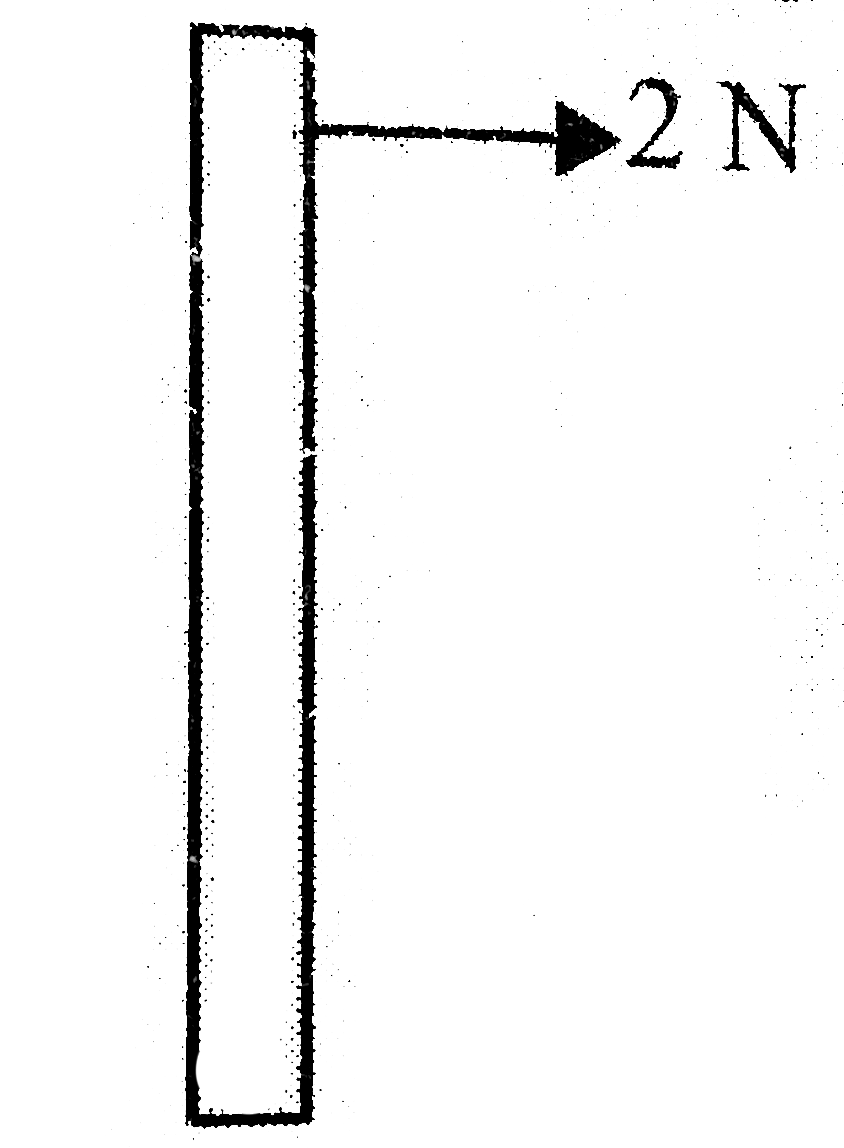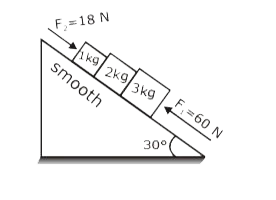
For the system shown in figure, M=1kg m=0.2 kg, r=0.2m calculate (g=10m/s2)
(a). The linear acceleration of hoop,
(b). The angular acceleration of the hoop of mass M and
(c). The tension in the rope.

If α be the angular acceleration of the hoop and a be the acceleration if its centre, accelaration of m would be αr+a
Here Tr=Iα [where I= moment of inertia of the hoop about the horizontal axis passing through its centre].
Also, T=Ma and mg−T=m[a+ar]
solving we get
a=mg[M=2m]=21.4=1.43m/s2
Hence, T=1.43N
and α=TrI=TMr=7.15rad/s2
Topper's Solved these Questions
- ROTATIONAL MECHANICSBOOK - DC PANDEYCHAPTER - ROTATIONAL MECHANICSEXERCISE - Subjective Questions
2 Videos
- ROTATIONAL MECHANICSBOOK - DC PANDEYCHAPTER - ROTATIONAL MECHANICSEXERCISE - Level 2
1 Videos
- ROTATIONBOOK - DC PANDEYCHAPTER - ROTATIONEXERCISE - (C) Chapter Exercises
39 Videos
- ROTATIONAL MOTIONBOOK - DC PANDEYCHAPTER - ROTATIONAL MOTIONEXERCISE - Integer Type Questions
17 Videos
Similar Questions
Knowledge Check
In the figure shown, the acceleration of block of mass m2 is 2m/s2. The acceleration of m1 :
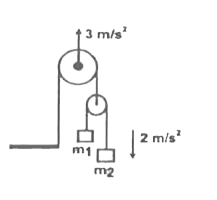 Awill be 8m/s2 upwardBwill be 4m/s2 upwardCwill be 14m/s2 upwardDThe value depends upon actual values of m1 and m2
Awill be 8m/s2 upwardBwill be 4m/s2 upwardCwill be 14m/s2 upwardDThe value depends upon actual values of m1 and m2A 20 kg monkey slides down a vertical rope with a constant acceleration of 7ms−2. If g=10m/s−2, what is the tension in the rope ?
A140 NB100 NC60 ND30 NIn the system shown in figure mB=4kg , and mA=2kg . The pulleys are massless and friction is absent everywhere. The acceleration of block A is.
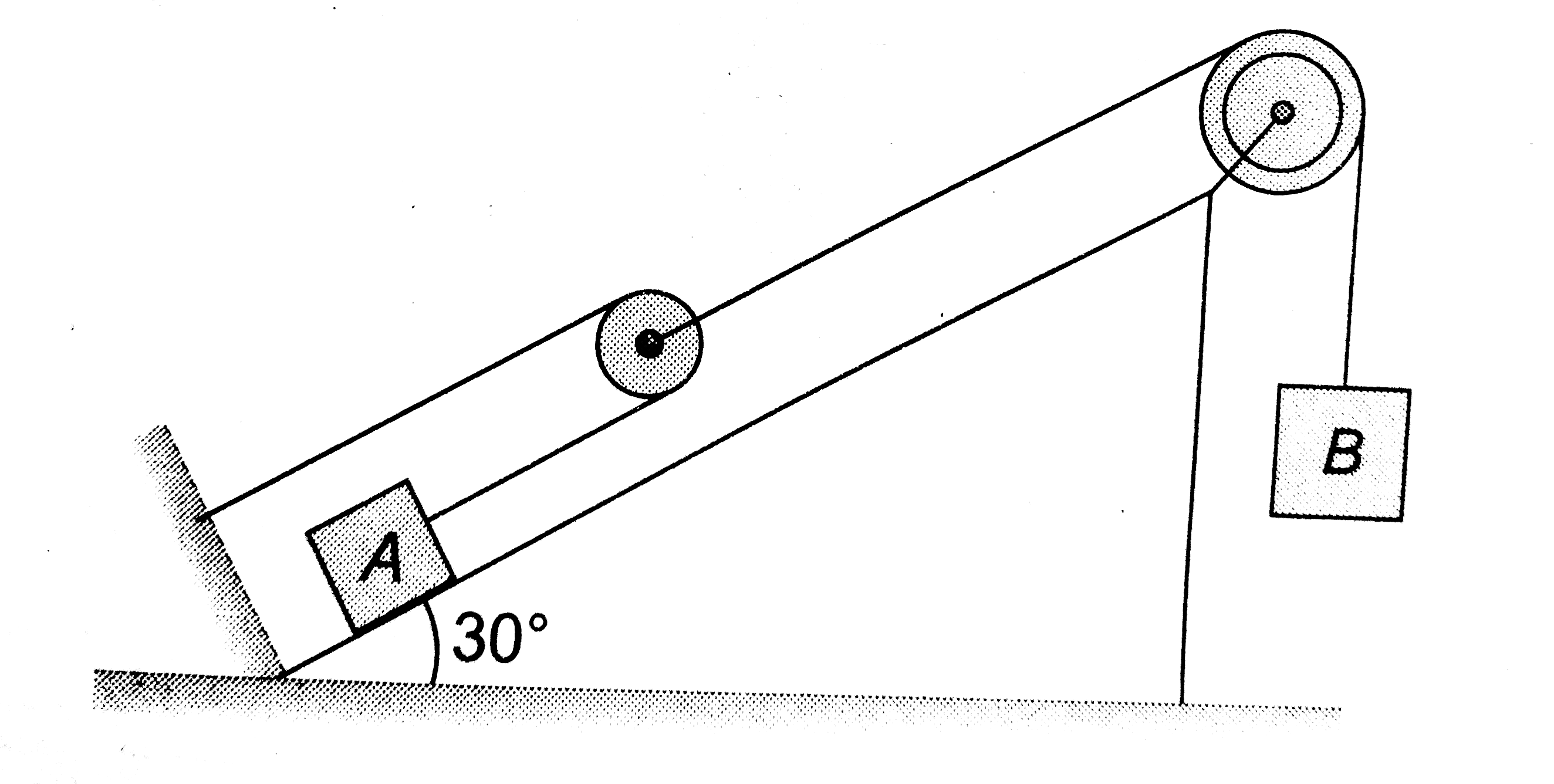 A10/3m/s2B20/3m/s2C2m/s2D4m/s2
A10/3m/s2B20/3m/s2C2m/s2D4m/s2
If the system shown in the figure is rotated in a horizontal circle with angular velocity ω . Find (g=10m/s2)
(a) the minimum value of ω to start relative motion between the two blocks.
(b) tension in the string connecting m1 and m2 when slipping just starts between the blocks
The coefficient of frition between the two masses is 0.5 and there is no friction between m2 and ground. The dimensions of the masses can be neglected. (Take R=0.5m,m1=2Kg,m2=1Kg)
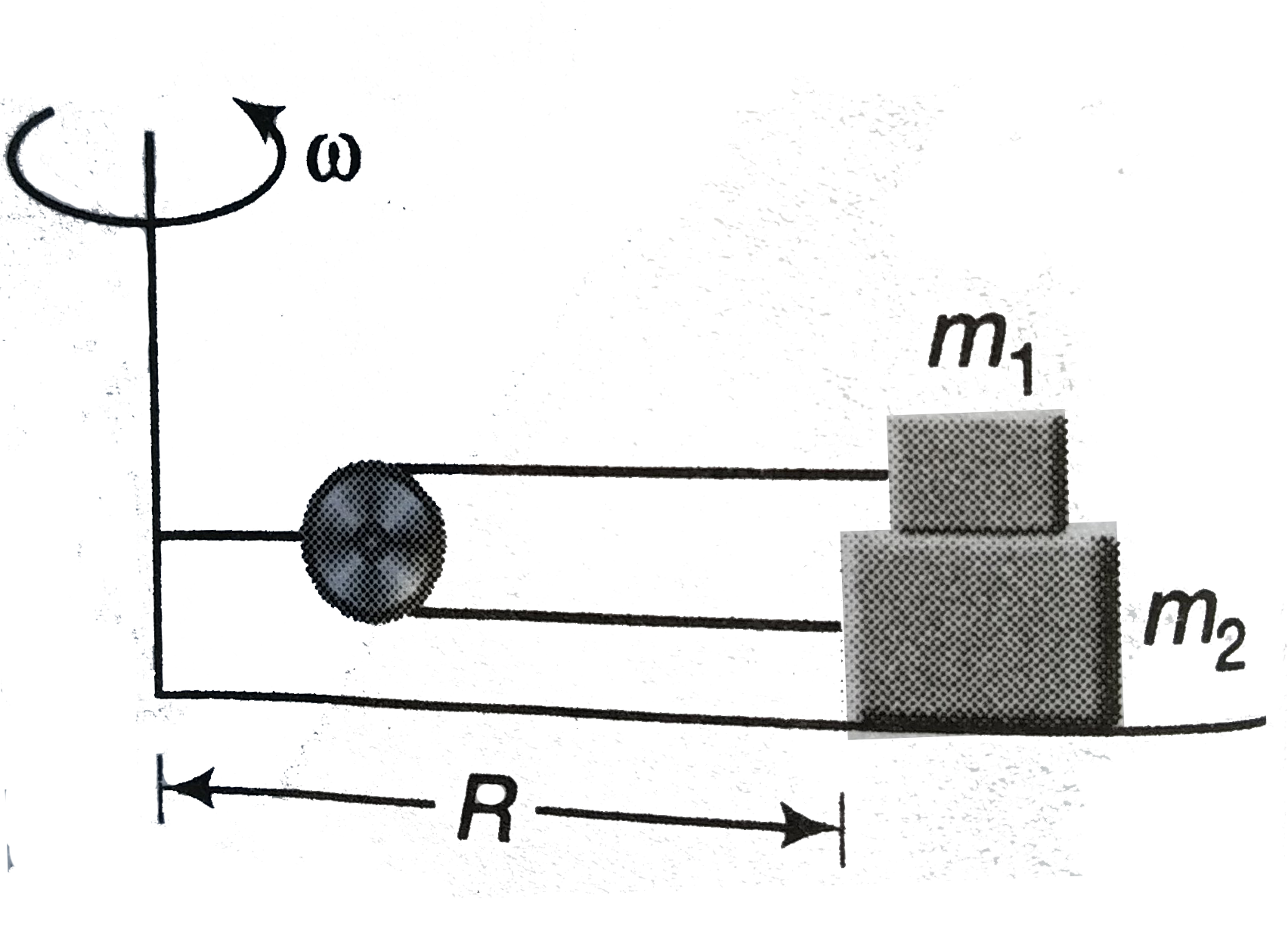
View SolutionTwo blocks of masses m1=2kgandm2=5kg hang over a massless pulley as shown in the fig A force F0=100N acting at the axis of the pulley accelerates the system upwards Find
(a) the acceleration of each mass
(b) the tension in the string.

View SolutionIn the figure shown ,find :(g=10m/s2)
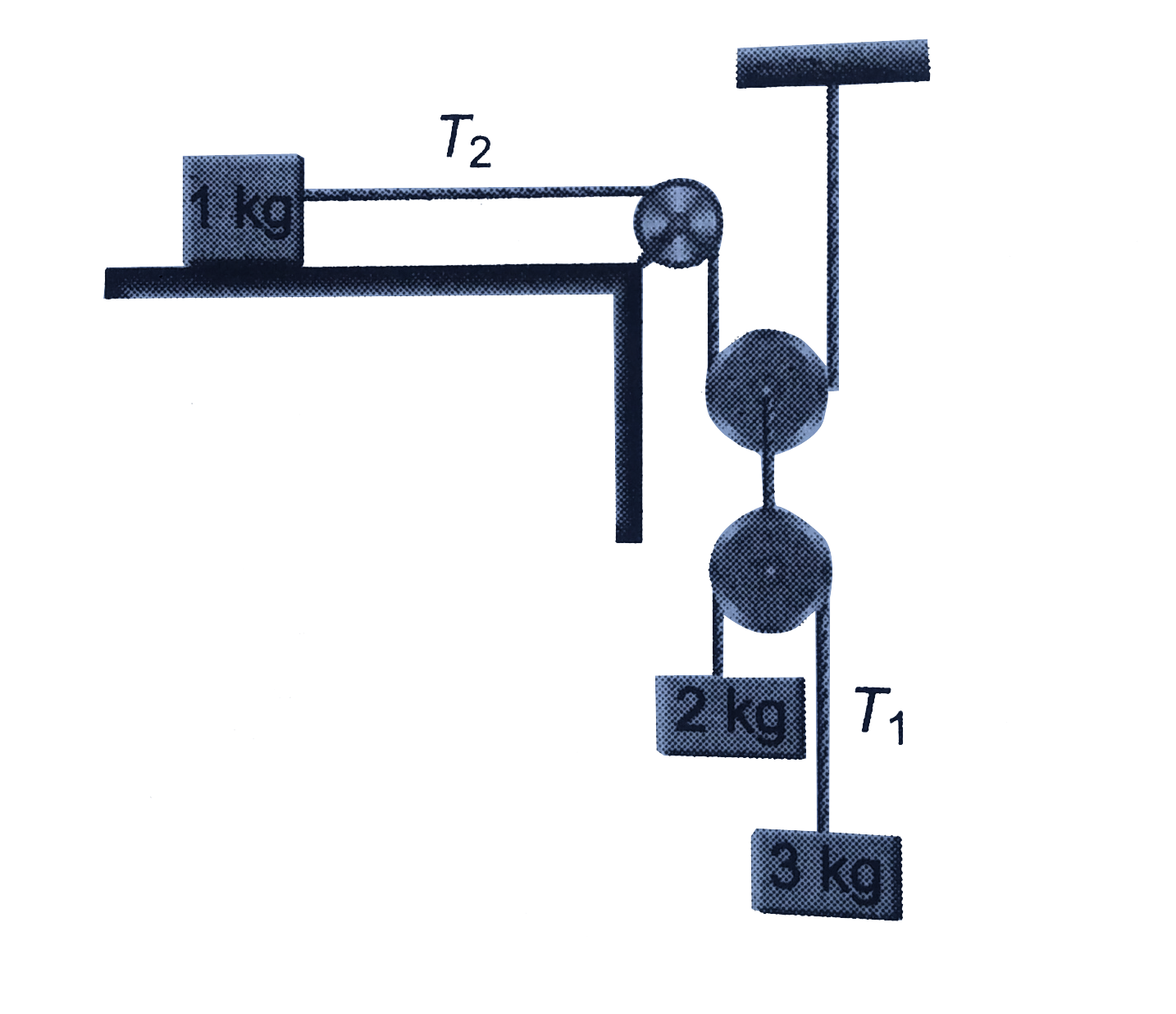
(a) acceleration of 1kg,2kg and 3kg blocks and
(b) tension T1 and T2.
View SolutionA force of 10N gives a mass m1 an acceleration of 10m/s2 and a mass m2 an acceleration of 20m/s2 What acceleration would it give if both the masses are tid together ?
View SolutionTwo blocks shown in figure are connected by a heavy uniform rope of mass 4kg. An upward force of 200N is applied as shown
(a) What is the acceleration of the system .
(b)What is the tension at the rop of the rop ?
( c) What is the tension at the mid- point of the rop
(Takeg=9.8m/s2)
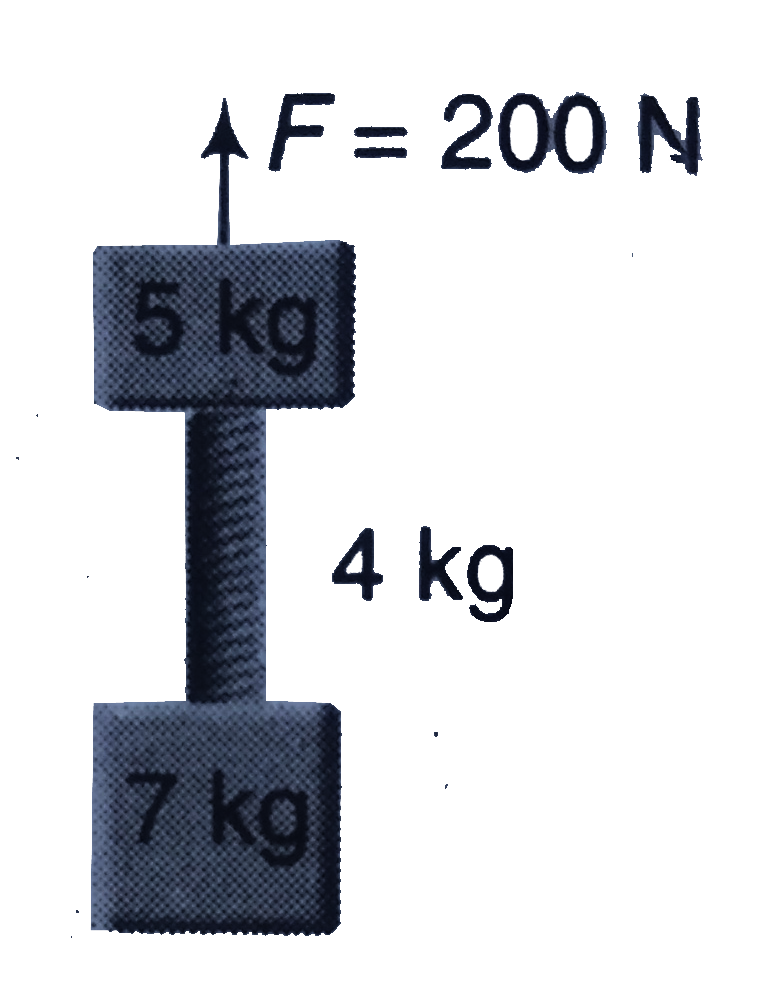
View Solution

